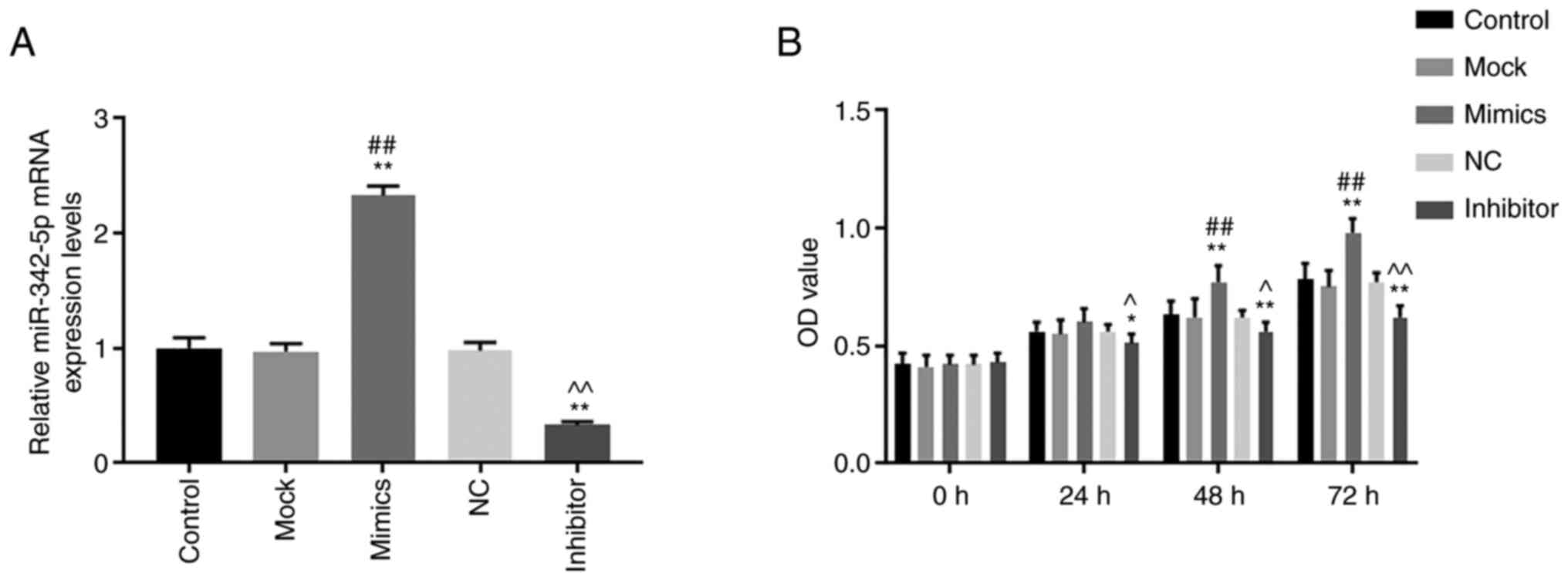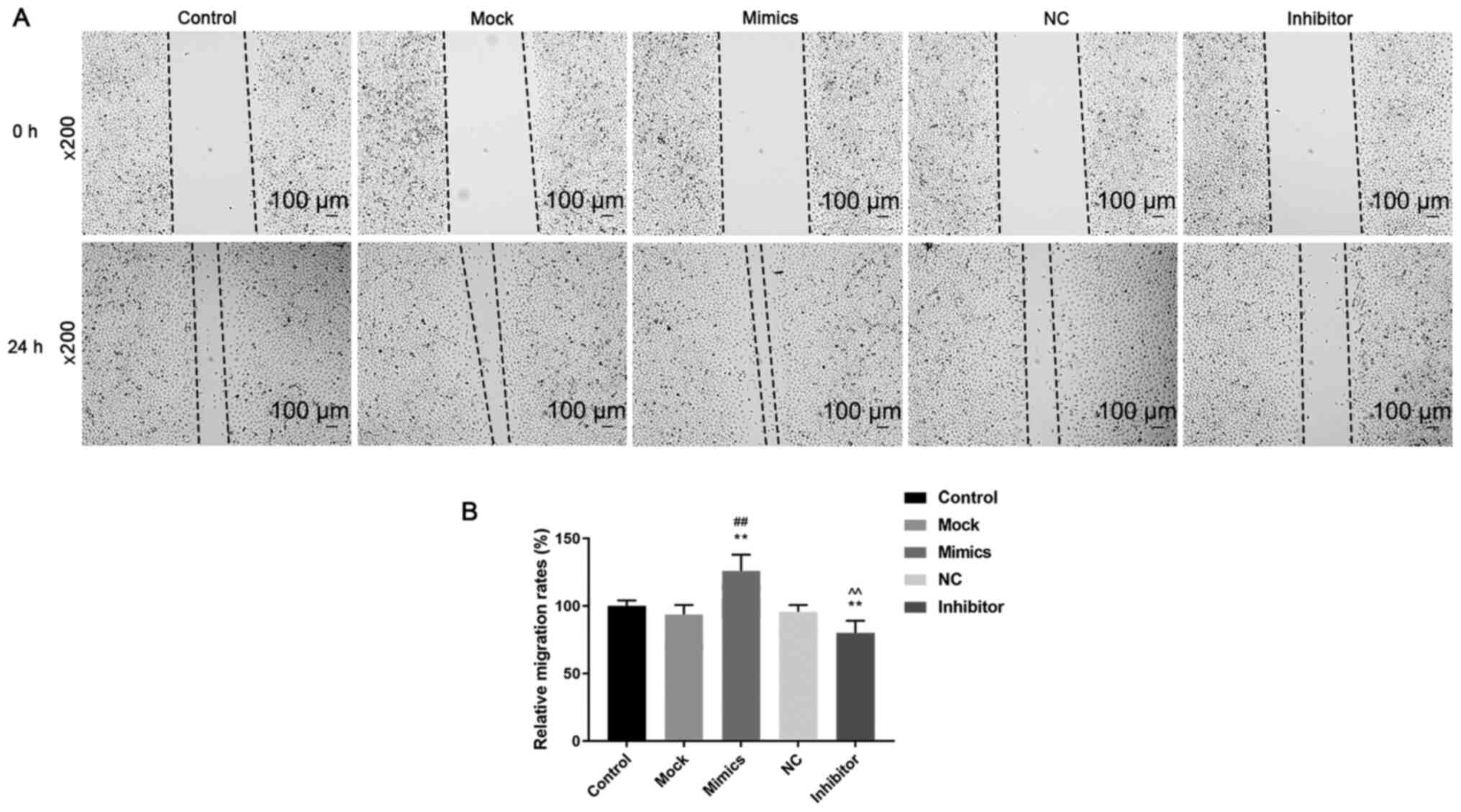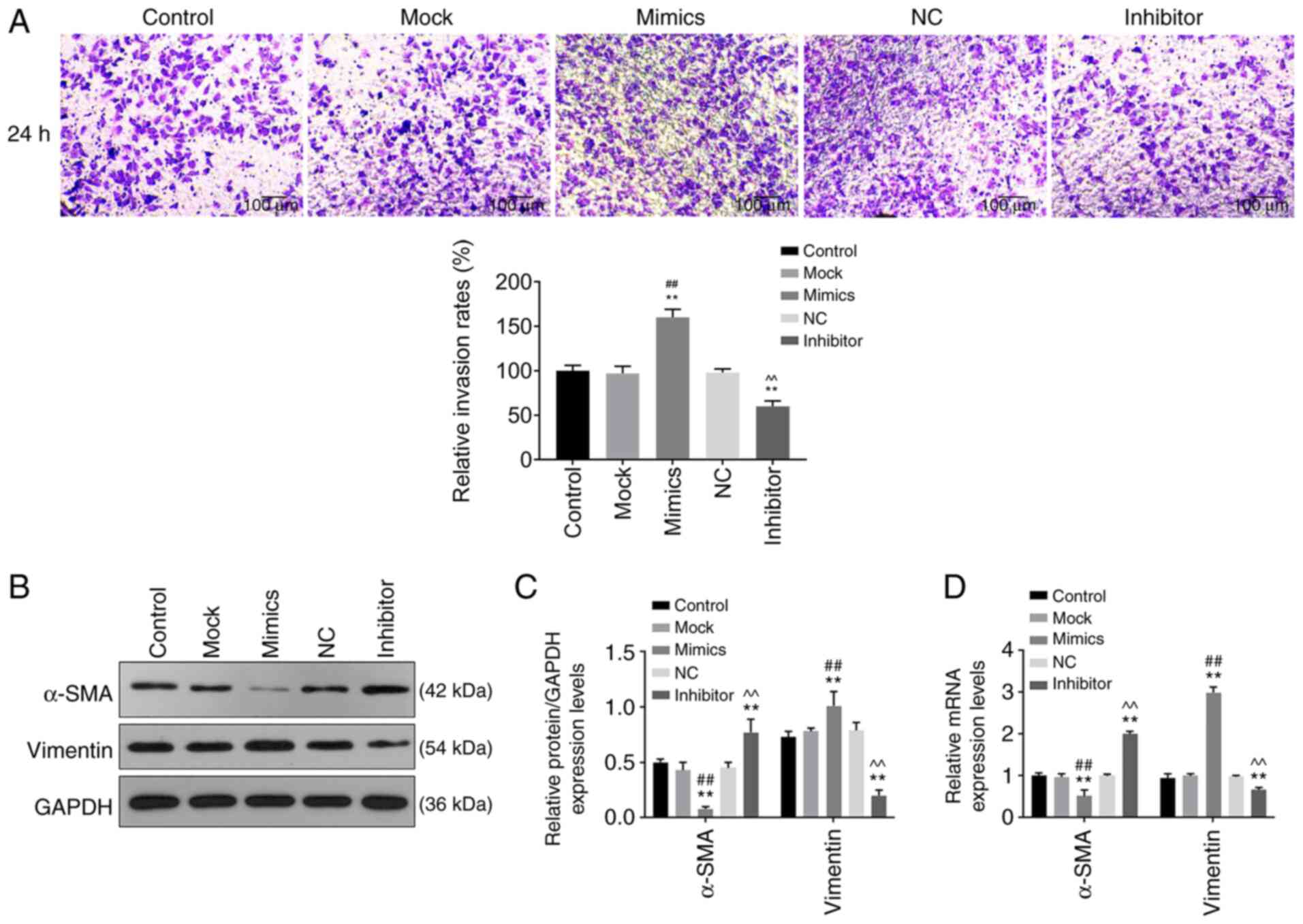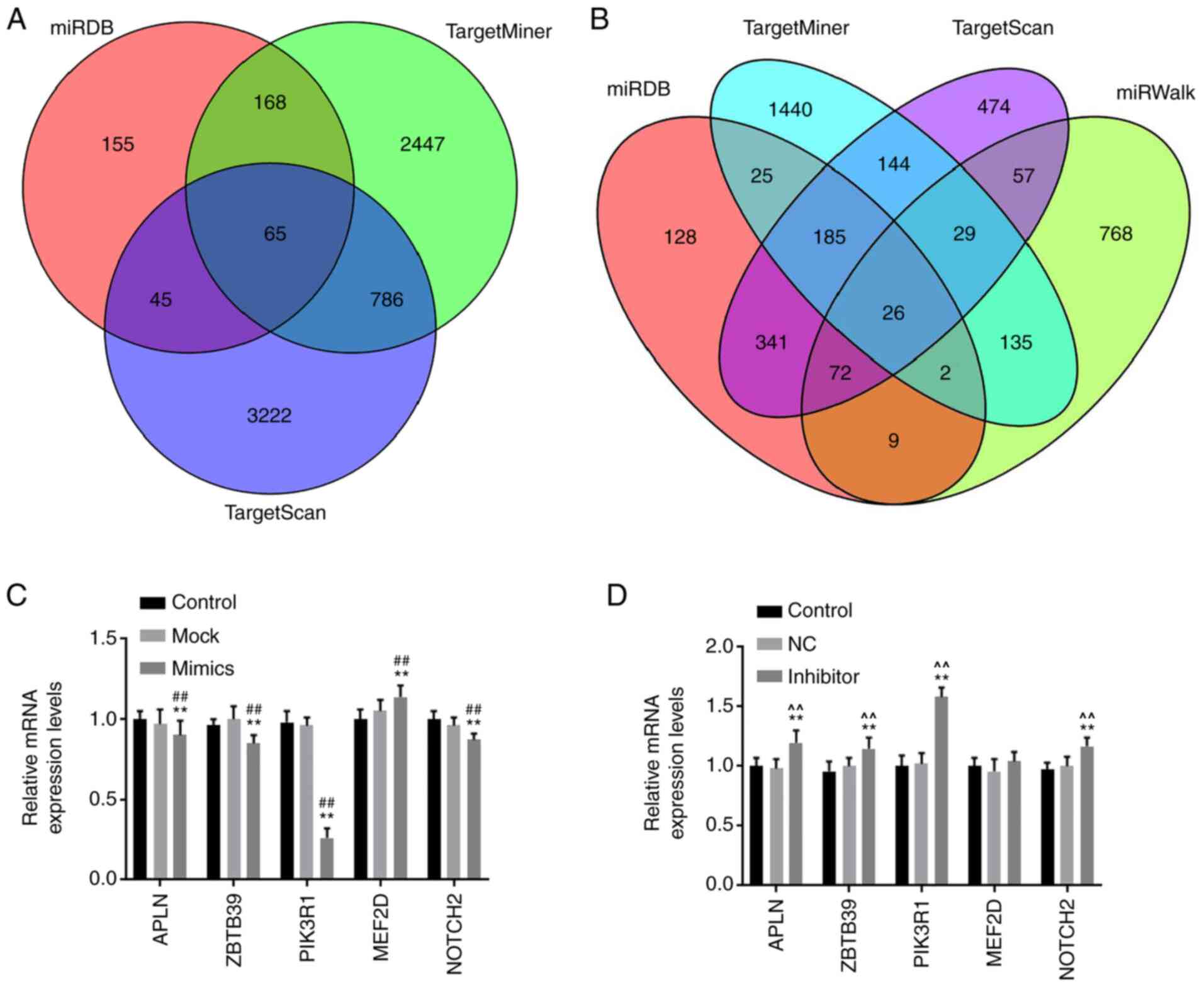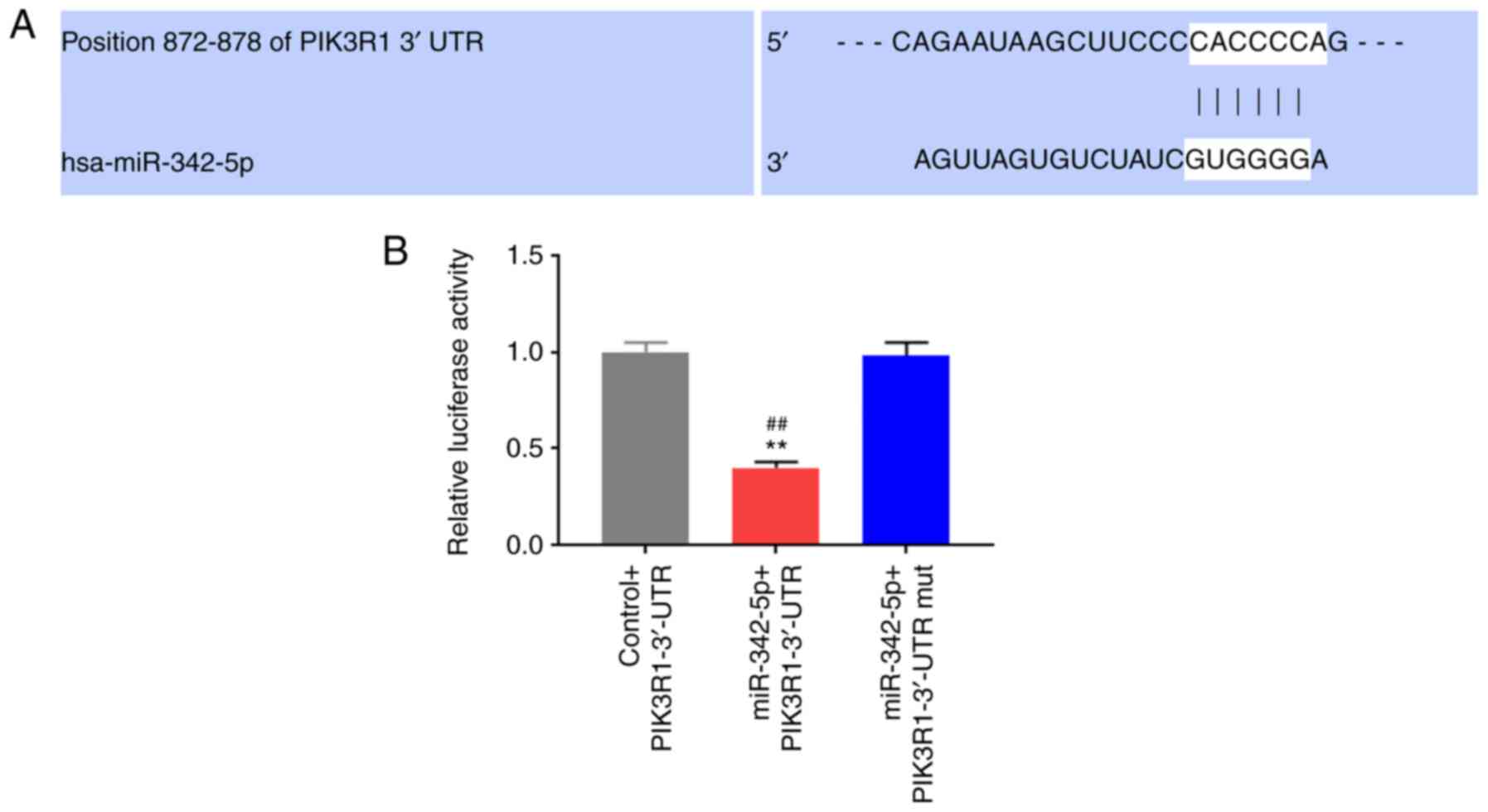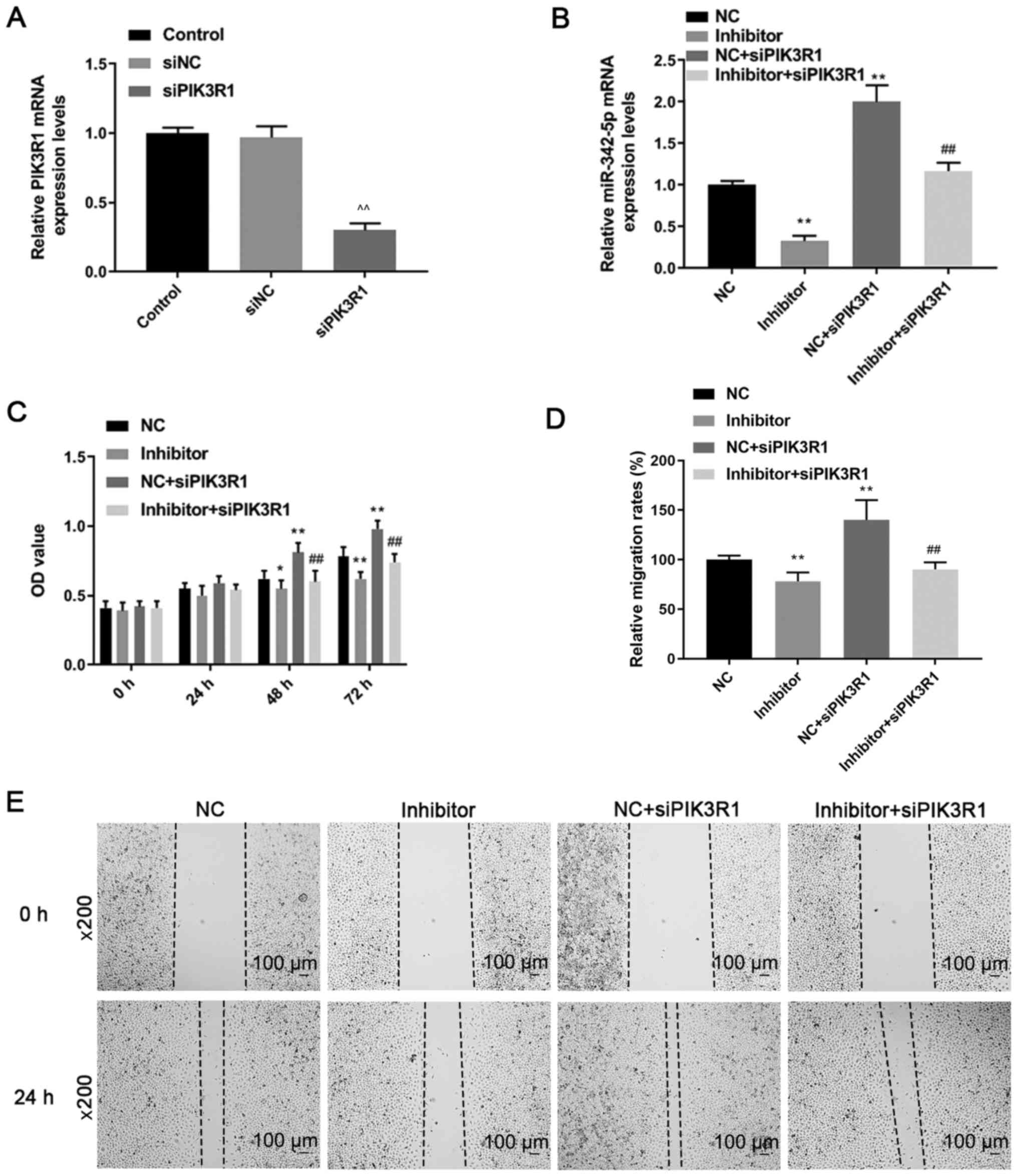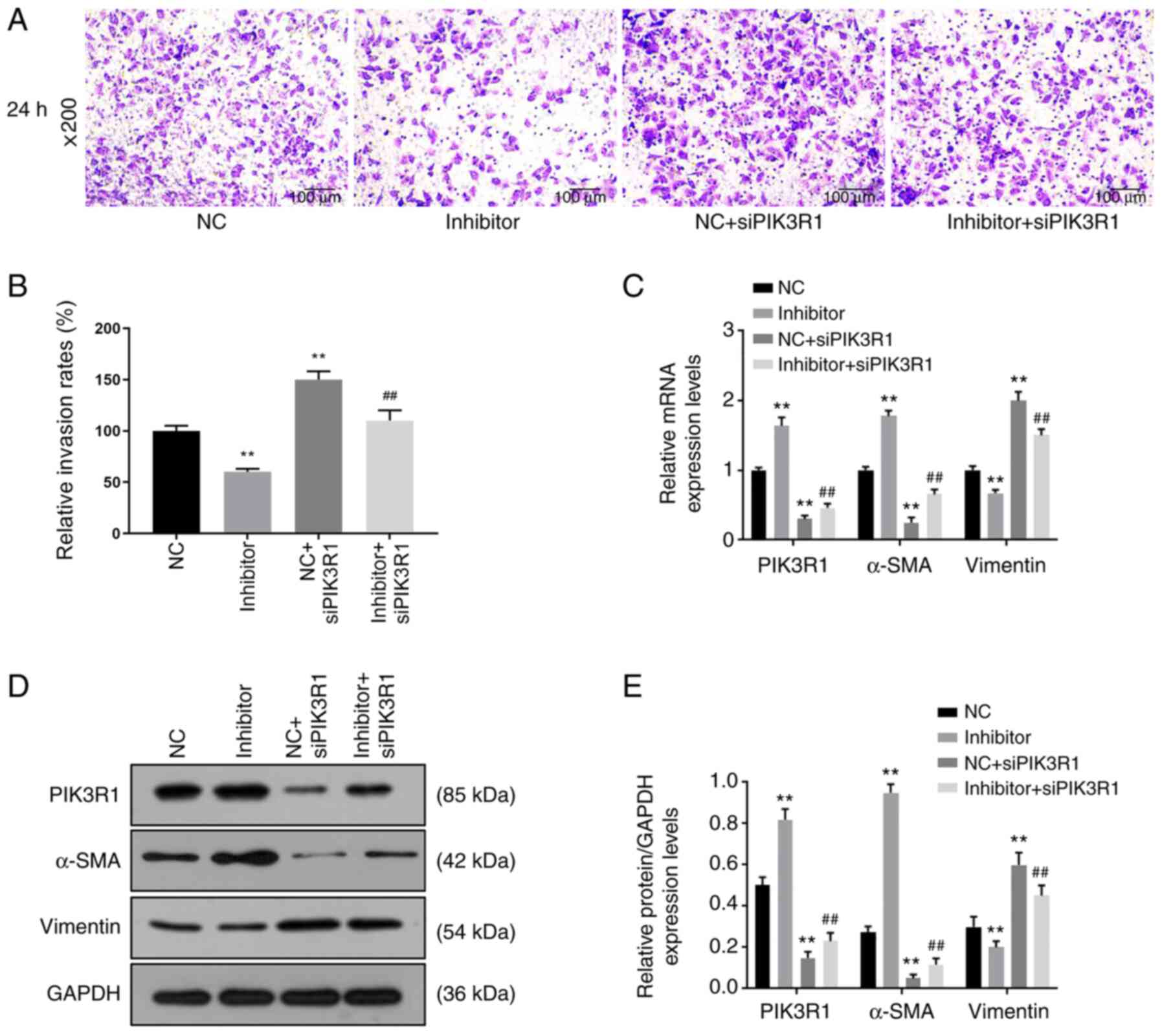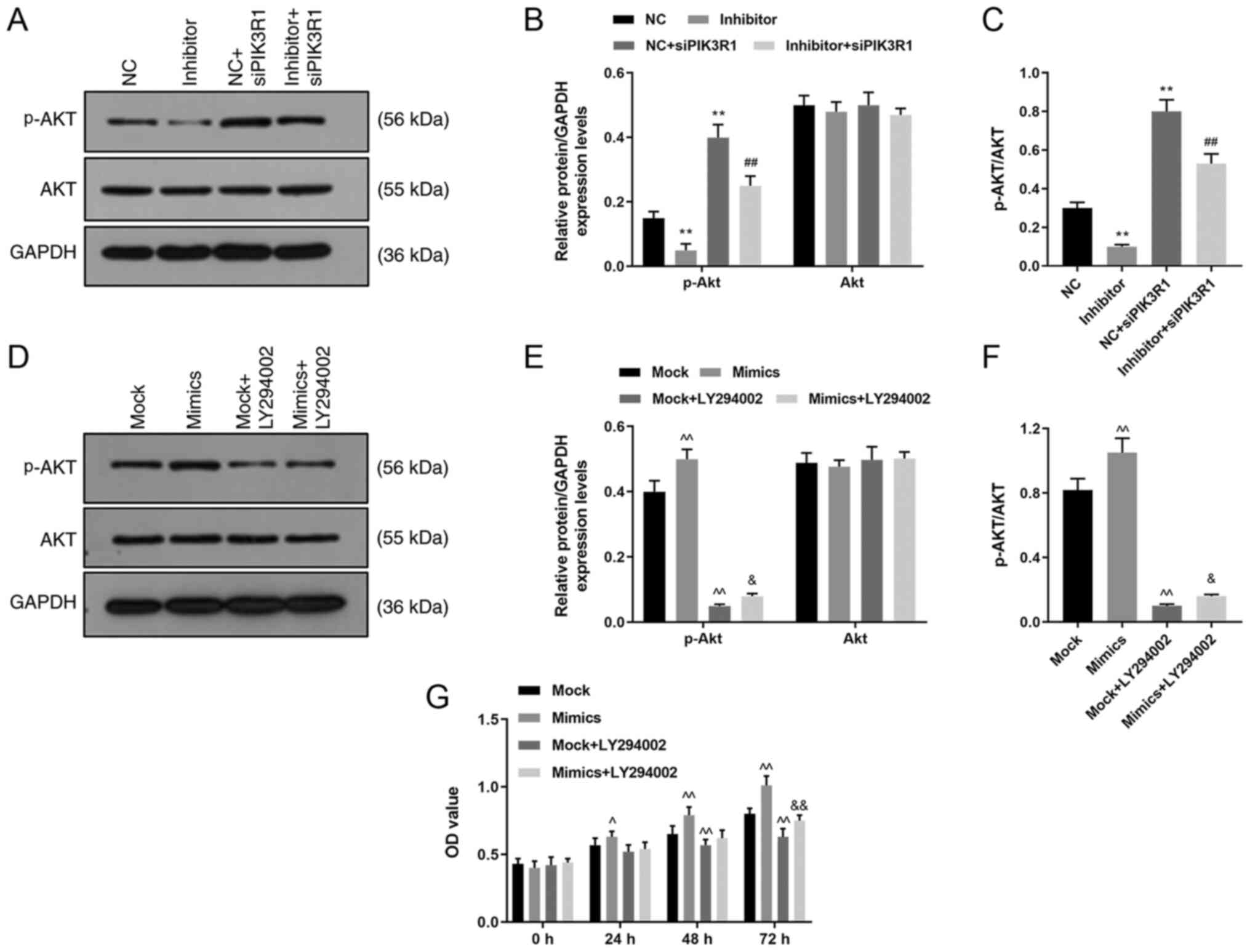|
1
|
Lisy K, Campbell JM, Tufanaru C, Moola S
and Lockwood C: The prevalence of disability among people with
cancer, cardiovascular disease, chronic respiratory disease and/or
diabetes: A systematic review. Int J Evid Based Healthc.
16:154–166. 2018.PubMed/NCBI View Article : Google Scholar
|
|
2
|
Stevens W, Peneva D, Li JZ, Liu LZ, Liu G,
Gao R and Lakdawalla DN: Estimating the future burden of
cardiovascular disease and the value of lipid and blood pressure
control therapies in China. BMC Health Serv Res.
16(175)2016.PubMed/NCBI View Article : Google Scholar
|
|
3
|
Huang CH, Ciou JS, Chen ST, Kok VC, Chung
Y, Tsai JJ, Kurubanjerdjit N, Huang CF and Ng KL: Identify
potential drugs for cardiovascular diseases caused by
stress-induced genes in vascular smooth muscle cells. PeerJ.
4(e2478)2016.PubMed/NCBI View Article : Google Scholar
|
|
4
|
Tykocki NR, Boerman EM and Jackson WF:
Smooth muscle ion channels and regulation of vascular tone in
resistance arteries and arterioles. Compr Physiol. 7:485–581.
2017.PubMed/NCBI View Article : Google Scholar
|
|
5
|
Zhang W, Chen S, Zhang Z, Wang C and Liu
C: FAM3B mediates high glucose-induced vascular smooth muscle cell
proliferation and migration via inhibition of miR-322-5p. Sci Rep.
7(2298)2017.PubMed/NCBI View Article : Google Scholar
|
|
6
|
Nazari-Jahantigh M, Egea V, Schober A and
Weber C: MicroRNA-specific regulatory mechanisms in
atherosclerosis. J Mol Cell Cardiol. 89:35–41. 2015.PubMed/NCBI View Article : Google Scholar
|
|
7
|
Andreou I, Sun X, Stone PH, Edelman ER and
Feinberg MW: miRNAs in atherosclerotic plaque initiation,
progression, and rupture. Trends Mol Med. 21:307–318.
2015.PubMed/NCBI View Article : Google Scholar
|
|
8
|
Li K, Pan J, Wang J, Liu F and Wang L:
MiR-665 regulates VSMCs proliferation via targeting FGF9 and MEF2D
and modulating activities of Wnt/β-catenin signaling. Am J Transl
Res. 9:4402–4414. 2017.PubMed/NCBI
|
|
9
|
Nguyen MA, Karunakaran D and Rayner KJ:
Unlocking the door to new therapies in cardiovascular disease:
MicroRNAs hold the key. Curr Cardiol Rep. 16(539)2014.PubMed/NCBI View Article : Google Scholar
|
|
10
|
Zhu R, Liu X, Zhu Y and He Z: MiRNAs:
Potential diagnostic and therapeutic targets for cerebral
ischaemia. Neurol Res. 38:86–92. 2016.PubMed/NCBI View Article : Google Scholar
|
|
11
|
Jia YY, Zhao JY, Li BL, Gao K, Song Y, Liu
MY, Yang XJ, Xue Y, Wen AD and Shi L: miR-592/WSB1/HIF-1α axis
inhibits glycolytic metabolism to decrease hepatocellular carcinoma
growth. Oncotarget. 7:35257–35269. 2016.PubMed/NCBI View Article : Google Scholar
|
|
12
|
Wang H, Jiang M, Xu Z, Huang H, Gong P,
Zhu H and Ruan C: miR-146b-5p promotes VSMC proliferation and
migration. Int J Clin Exp Pathol. 8:12901–12907. 2015.PubMed/NCBI
|
|
13
|
Choe N, Kwon DH, Shin S, Kim YS, Kim YK,
Kim J, Ahn Y, Eom GH and Kook H: The microRNA miR-124 inhibits
vascular smooth muscle cell proliferation by targeting S100
calcium-binding protein A4 (S100A4). FEBS Lett. 591:1041–1052.
2017.PubMed/NCBI View Article : Google Scholar
|
|
14
|
Bi R, Ding F, He Y, Jiang L, Jiang Z, Mei
J and Liu H: miR-503 inhibits platelet-derived growth
factor-induced human aortic vascular smooth muscle cell
proliferation and migration through targeting the insulin receptor.
Biomed Pharmacother. 84:1711–1716. 2016.PubMed/NCBI View Article : Google Scholar
|
|
15
|
Wei Y, Nazari-Jahantigh M, Chan L, Zhu M,
Heyll K, Corbalán-Campos J, Hartmann P, Thiemann A, Weber C and
Schober A: The microRNA-342-5p fosters inflammatory macrophage
activation through an Akt1- and microRNA-155-dependent pathway
during atherosclerosis. Circulation. 127:1609–1619. 2013.PubMed/NCBI View Article : Google Scholar
|
|
16
|
Ahmadi R, Heidarian E, Fadaei R, Moradi N,
Malek M and Fallah S: miR-342-5p expression levels in coronary
artery disease patients and its association with inflammatory
cytokines. Clin Lab. 64:603–609. 2018.PubMed/NCBI View Article : Google Scholar
|
|
17
|
Yan XC, Cao J, Liang L, Wang L, Gao F,
Yang ZY, Duan JL, Chang TF, Deng SM, Liu Y, et al: miR-342-5p is a
notch downstream molecule and regulates multiple angiogenic
pathways including notch, vascular endothelial growth factor and
transforming growth factor β signaling. J Am Heart Assoc.
5(e003042)2016.PubMed/NCBI View Article : Google Scholar
|
|
18
|
Rivard A and Andres V: Vascular smooth
muscle cell proliferation in the pathogenesis of atherosclerotic
cardiovascular diseases. Histol Histopathol. 15:557–571.
2000.PubMed/NCBI View Article : Google Scholar
|
|
19
|
Livak KJ and Schmittgen TD: Analysis of
relative gene expression data using real-time quantitative PCR and
the 2(-Delta Delta C(T)) method. Methods. 25:402–408.
2001.PubMed/NCBI View Article : Google Scholar
|
|
20
|
Zhong JC, Zhang ZZ, Wang W, McKinnie SMK,
Vederas JC and Oudit GY: Targeting the apelin pathway as a novel
therapeutic approach for cardiovascular diseases. Biochim Biophys
Acta Mol Basis Dis. 1863:1942–1950. 2017.PubMed/NCBI View Article : Google Scholar
|
|
21
|
Yu G, Luo Z, Zhou Y, Zhang L, Wu Y, Ding L
and Shi Y: Uncovering the pharmacological mechanism of Carthamus
tinctorius L. On cardiovascular disease by a systems pharmacology
approach. Biomed Pharmacother. 117(109094)2019.PubMed/NCBI View Article : Google Scholar
|
|
22
|
Cai W, Zhang J and Yang J, Fan Z, Liu X,
Gao W, Zeng P, Xiong M, Ma C and Yang J: MicroRNA-24 attenuates
vascular remodeling in diabetic rats through PI3K/Akt signaling
pathway. Nutr Metab Cardiovasc Dis 621-632, 2019.
|
|
23
|
Meester JAN, Verstraeten A, Alaerts M,
Schepers D, Van Laer L and Loeys BL: Overlapping but distinct roles
for NOTCH receptors in human cardiovascular disease. Clin Genet.
95:85–94. 2019.PubMed/NCBI View Article : Google Scholar
|
|
24
|
Reddy MA, Das S, Zhuo C, Jin W, Wang M,
Lanting L and Natarajan R: Regulation of vascular smooth muscle
cell dysfunction under diabetic conditions by miR-504. Arterioscler
Thromb Vasc Biol. 36:864–873. 2016.PubMed/NCBI View Article : Google Scholar
|
|
25
|
Zhao W, Zhao SP and Zhao YH:
MicroRNA-143/-145 in cardiovascular diseases. Biomed Res Int.
2015(531740)2015.PubMed/NCBI View Article : Google Scholar
|
|
26
|
Ge Y, Zhao K, Qi Y, Min X, Shi Z, Qi X,
Shan Y, Cui L, Zhou M, Wang Y, et al: Serum microRNA expression
profile as a biomarker for the diagnosis of pertussis. Mol Biol
Rep. 40:1325–1332. 2013.PubMed/NCBI View Article : Google Scholar
|
|
27
|
Chistiakov DA, Orekhov AN and Bobryshev
YV: Vascular smooth muscle cell in atherosclerosis. Acta Physiol
(Oxf). 214:33–50. 2015.PubMed/NCBI View Article : Google Scholar
|
|
28
|
Psaltis PJ and Simari RD: Vascular wall
progenitor cells in health and disease. Circ Res. 116:1392–1412.
2015.PubMed/NCBI View Article : Google Scholar
|
|
29
|
Deng S, Zhang Y, Wang Y, Lu X and Jiang Q:
MicroRNA-92 regulates vascular smooth muscle cell function by
targeting KLF4 during vascular restenosis and injury. Int J Clin
Exp Pathol. 12:4253–4262. 2019.PubMed/NCBI
|
|
30
|
Kingsley K, Huff JL, Rust WL, Carroll K,
Martinez AM, Fitchmun M and Plopper GE: ERK1/2 mediates PDGF-BB
stimulated vascular smooth muscle cell proliferation and migration
on laminin-5. Biochem Biophys Res Commun. 293:1000–1006.
2002.PubMed/NCBI View Article : Google Scholar
|
|
31
|
Chiong M, Cartes-Saavedra B,
Norambuena-Soto I, Mondaca-Ruff D, Morales PE, García-Miguel M and
Mellado R: Mitochondrial metabolism and the control of vascular
smooth muscle cell proliferation. Front Cell Dev Biol.
2(72)2014.PubMed/NCBI View Article : Google Scholar
|
|
32
|
Park ES, Kang SI, Yoo KD, Lee MY, Yoo HS,
Hong JT, Shin HS, Kim B and Yun YP: Camptothecin inhibits
platelet-derived growth factor-BB-induced proliferation of rat
aortic vascular smooth muscle cells through inhibition of PI3K/Akt
signaling pathway. Exp Cell Res. 319:982–991. 2013.PubMed/NCBI View Article : Google Scholar
|
|
33
|
Kim S, Zhan Y, Izumi Y, Yasumoto H, Yano M
and Iwao H: In vivo activation of rat aortic platelet-derived
growth factor and epidermal growth factor receptors by angiotensin
II and hypertension. Arterioscler Thromb Vasc Biol. 20:2539–2545.
2000.PubMed/NCBI View Article : Google Scholar
|
|
34
|
Pei C, Qin S, Wang M and Zhang S:
Regulatory mechanism of human vascular smooth muscle cell
phenotypic transformation induced by NELIN. Mol Med Rep.
12:7310–7316. 2015.PubMed/NCBI View Article : Google Scholar
|
|
35
|
Wang G, Jacquet L, Karamariti E and Xu Q:
Origin and differentiation of vascular smooth muscle cells. J
Physiol. 593:3013–3030. 2015.PubMed/NCBI View Article : Google Scholar
|
|
36
|
Salabei JK, Cummins TD, Singh M, Jones SP,
Bhatnagar A and Hill BG: PDGF-mediated autophagy regulates vascular
smooth muscle cell phenotype and resistance to oxidative stress.
Biochem J. 451:375–388. 2013.PubMed/NCBI View Article : Google Scholar
|
|
37
|
Zhong W, Li B, Yang P, Chen R, Wang C,
Wang Z, Shao C, Yuan W and Yan J: CD137-CD137L interaction
modulates neointima formation and the phenotype transformation of
vascular smooth muscle cells via NFATc1 signaling. Mol Cell
Biochem. 439:65–74. 2018.PubMed/NCBI View Article : Google Scholar
|
|
38
|
Ersahin T, Tuncbag N and Cetin-Atalay R:
The PI3K/AKT/mTOR interactive pathway. Mol Biosyst. 11:1946–1954.
2015.PubMed/NCBI View Article : Google Scholar
|
|
39
|
Xu T, Zhu H, Li D, Lang Y, Cao L, Liu Y,
Wu W and Chen D: Luteolin inhibits angiotensin II-stimulated VSMC
proliferation and migration through downregulation of Akt
phosphorylation. Evid Based Complement Alternat Med.
2015(931782)2015.PubMed/NCBI View Article : Google Scholar
|
|
40
|
Brown DJ, Rzucidlo EM, Merenick BL, Wagner
RJ, Martin KA and Powell RJ: Endothelial cell activation of the
smooth muscle cell phosphoinositide 3-kinase/Akt pathway promotes
differentiation. J Vasc Surg. 41:509–516. 2005.PubMed/NCBI View Article : Google Scholar
|
|
41
|
Ponnusamy A, Sinha S, Hyde GD, Borland SJ,
Taylor RF, Pond E, Eyre HJ, Inkson CA, Gilmore A, Ashton N, et al:
FTI-277 inhibits smooth muscle cell calcification by up-regulating
PI3K/Akt signaling and inhibiting apoptosis. PLoS One.
13(e0196232)2018.PubMed/NCBI View Article : Google Scholar
|
|
42
|
Fang H, Yang S, Luo Y, Zhang C, Rao Y, Liu
R, Feng Y and Yu J: Notoginsenoside R1 inhibits vascular smooth
muscle cell proliferation, migration and neointimal hyperplasia
through PI3K/Akt signaling. Sci Rep. 8(7595)2018.PubMed/NCBI View Article : Google Scholar
|















